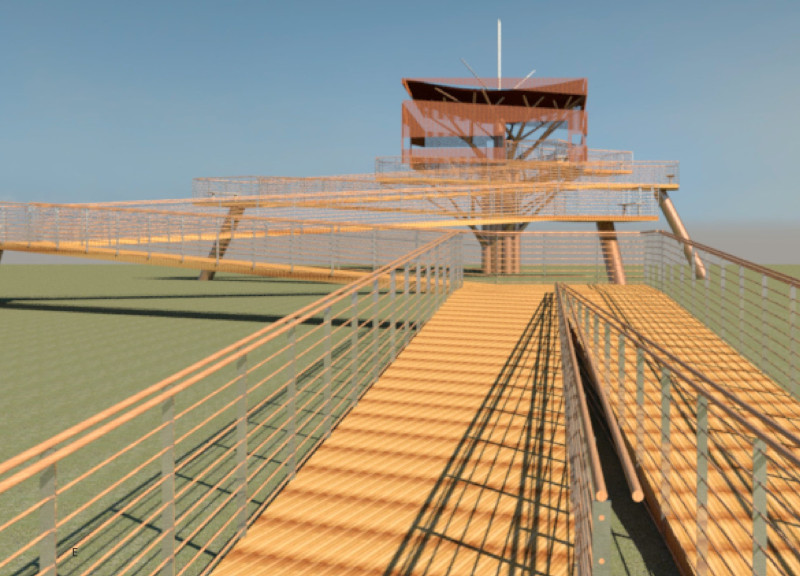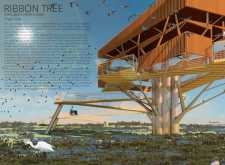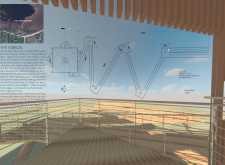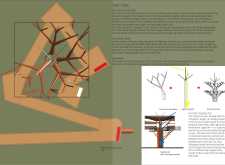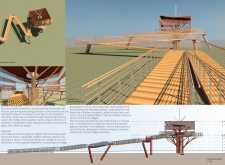5 key facts about this project
### Overview
The Ribbon Tree Bird Observation Tower is situated at Pape Park, a site known for its ecological significance and rich avian biodiversity. The project aims to enhance the birdwatching experience while ensuring minimal environmental impact and promoting interaction with the local natural landscape. Through its design, the tower seeks to integrate architecture with ecology, inviting visitors to appreciate both the setting and the wildlife it supports.
### Spatial Configuration
The design features a 50-meter-long path made up of gently ascending ramps that lead to a series of observation platforms. Each platform is positioned at varying heights, allowing for diverse vistas of the park and emphasizing a gradual ascent into nature. This approach encourages a sensory exploration of the environment, inviting users to engage with the park's flora and fauna throughout their journey. The structural design resembles the organic growth of trees, featuring a central core that branches out into four primary supports. This configuration maintains a reduced footprint, minimizing disruption to the surrounding wetlands while maximizing visibility for observers.
### Material Considerations
Materiality is a key element in the observatory's design, reflecting a commitment to sustainability and contextual relevance. Local timber is utilized for the flooring of the platforms and ramps, chosen for its ecological impact and alignment with the area's vernacular architecture. Steel elements provide necessary durability and are treated to resist corrosion in the wetland environment. Additionally, aluminum is incorporated in the central lighting structure, emphasizing both safety and functionality. Collectively, these materials form a cohesive relationship with the surrounding landscape, ensuring that the structure harmonizes with its ecological context rather than imposing upon it.
The tower's inclusive design caters to visitors of all abilities, promoting accessibility while fostering a sense of community connection within nature. Future enhancements, such as the potential integration of solar panels and other eco-friendly technologies, are considered to further align with the project’s sustainable objectives.


